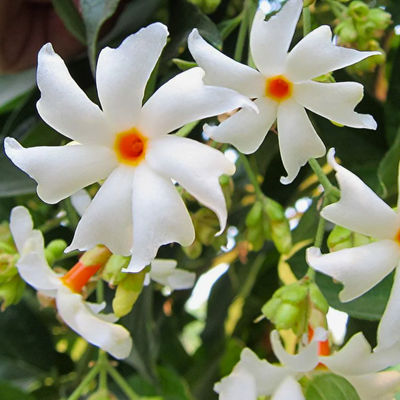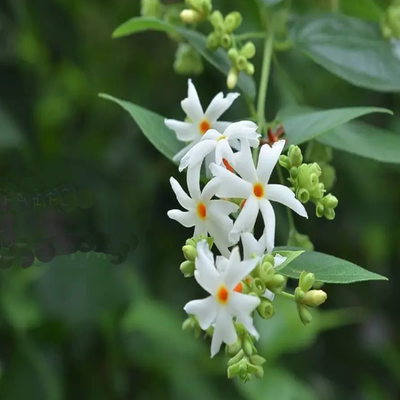
Bonsai Ficus Tiger Bark 4 years old Live Bonsai Plant
Guaranteed Safe Checkout
Green Paradise Offers Healthy
Bonsai Ficus TigerBark 4 Years Old Plant
About Bonsai Ficus Tiger Bark 4 Years Old Plant
The Bonsai Ficus Microcarpa Tigerbark, commonly known as Tigerbark Ficus or Tigerbark Fig, is a popular variety of bonsai trees. It is a cultivar of the Ficus microcarpa species, which is native to Southeast Asia and parts of China. The Tigerbark Ficus is highly valued for its distinctive and attractive bark pattern, which resembles the striped markings of a tiger.
Here are some key characteristics and information about a 4-year-old
Bonsai Ficus Microcarpa Tigerbark plant:
Size and Growth:
- At four years old, the Tigerbark Ficus bonsai will still be relatively small and compact.
- It would have undergone some initial training and shaping to develop its bonsai form.
- The overall size will depend on the specific care and pruning it has received during its growth.
Bark:
- The most striking feature of the Tigerbark Ficus is its unique bark pattern.
- The bark displays a mix of light and dark shades, creating tiger-like stripes or mottled patterns.
- As the bonsai ages, the bark develops more prominent texture and coloration.
Leaves:
- The Tigerbark Ficus has small, glossy, dark green leaves that are oval-shaped.
- The leaves are alternate in arrangement and can provide an attractive contrast to the bark when the tree is well-maintained and healthy.
Trunk and Branches:
- The trunk of a mature Tigerbark Ficus bonsai tends to be thick and well-developed, exhibiting the characteristic tiger-striped pattern.
- The branches are typically flexible and can be shaped and wired to achieve the desired bonsai form.
- Regular pruning and training help create a balanced and aesthetically pleasing structure.
Lighting and Temperature:
- The Tigerbark Ficus prefers bright, indirect light, making it suitable for both indoor and outdoor cultivation.
- It thrives in moderate to warm temperatures, ideally between 65°F to 85°F (18°C to 29°C).
- Protecting the plant from extreme temperatures is crucial.
Watering and Humidity:
- Bonsai Ficus Microcarpa Tigerbark plants should be watered thoroughly but allow the soil to partially dry out between watering sessions.
- Overwatering must be avoided because too much moisture can cause root rot.
- Regular misting or maintaining higher humidity levels can benefit the plant, especially in dry indoor environments.
Soil and Fertilizer:
- Well-draining soil is essential for the Tigerbark Ficus bonsai.
- A mix of bonsai soil, such as a blend of Akadama, pumice, and lava rock, can be suitable.
- Fertilize the plant with a balanced bonsai fertilizer during the growing season to promote healthy growth and development.
Pruning and Wiring:
- Regular pruning is necessary to maintain the desired shape and size of the bonsai.
- Trim back new growth to maintain the overall form and encourage branching.
- Wiring can be used cautiously to guide the growth of branches and achieve the desired artistic shape.
- However, care should be taken not to damage the bark.
Repotting:
- The Tigerbark Ficus should be repotted every two to three years to provide fresh soil and promote root health.
- Repotting is typically done during the spring when the plant is emerging from its dormant period.
Disease and Pest Management:
- Like other ficus species, the Tigerbark Ficus can be susceptible to common bonsai pests such as aphids, scale insects, and spider mites.
- Regular inspection and appropriate pest management techniques, such as using insecticidal soap or horticultural oils, can help prevent infestations.
- Additionally, maintaining good airflow and avoiding overwatering can help prevent fungal diseases.
With proper care, the Bonsai Ficus Microcarpa Tigerbark can be a stunning addition to any bonsai collection, showcasing its unique bark pattern and overall graceful appearance.
How To Grow Bonsai Ficus Microcarpa Tigerbark Plant
Growing a bonsai ficus macrocarpa tiger bark can be a rewarding and enjoyable experience.
Here are some general guidelines to help you care for and shape your bonsai:
Placement:
-
Ficus microcarpa tiger bark prefers bright, indirect light.
-
Place your bonsai near a window where it can receive plenty of filtered sunlight.
-
Avoid putting it in direct sunlight because that will burn the leaves.
Watering:
-
Check the soil moisture regularly by inserting your finger about an inch into the soil.
-
When the top inch of the soil feels just a little bit dry, water the bonsai.
-
Use a watering can or a gentle stream of water to saturate the soil evenly.
-
Ensure proper drainage by using a well-draining bonsai soil mix and a pot with drainage holes.
Humidity:
-
Ficus microcarpa tiger bark thrives in a humid environment.
-
To increase humidity, you can mist the leaves regularly or place the bonsai on a tray filled with water and pebbles.
-
Just make sure the pot is not sitting in water to avoid root rot.
Pruning and shaping:
-
Regular pruning and shaping are essential to maintain the desired bonsai form.
-
Use sharp, clean bonsai tools to trim back new growth, remove any unwanted branches, and encourage a compact shape.
-
Prune during the growing season to allow the tree to heal quickly.
-
Additionally, you can wire branches to guide their growth and create the desired shape.
-
Be careful not to wire too tightly to avoid damaging the dinghy.
Fertilization:
-
Ficus microcarpa tiger bark bonsai benefits from regular fertilization to ensure healthy growth.
-
Use a balanced, organic bonsai fertilizer and follow the instructions on the package.
-
Apply the fertilizer every four to six weeks during the growing season, reducing or discontinuing fertilization during the dormant period.
Repotting:
-
Bonsai ficus macrocarpa tiger bark generally needs to be repotted every two to three years.
-
Repotting helps refresh the soil, prune the roots, and promote healthy growth.
-
Repot during spring, before new growth begins.
-
Use a well-draining bonsai soil mix and prune back about one-third of the root mass before placing the bonsai in a slightly larger pot.
Pest control:
-
Keep an eye out for common pests like aphids, mealybugs, and scale insects.
-
Regularly inspect the leaves, stems, and soil for any signs of infestation.
-
still, treat them with an applicable germicide or use natural pest control styles like neem oil painting or insecticidal cleaner, If pests are present.
Remember that bonsai care requires patience and observation. Monitor your tree's growth, adjust your care routine as needed, and enjoy the process of shaping and nurturing your bonsai ficus macrocarpa tiger bark over time.


















